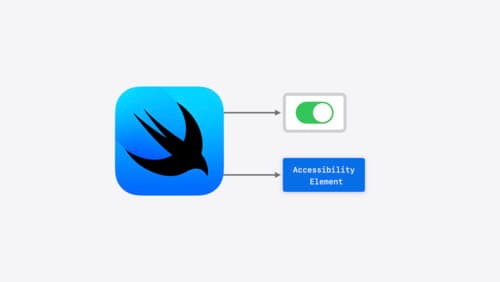swiftui markdown
Asked on 2024-08-06
1 search
To work with Markdown in SwiftUI, you can leverage various features and capabilities introduced in recent WWDC sessions. Here are some relevant points and sessions that might help you:
-
Text Interpolation and Attributed Strings:
- You can interpolate images directly in text and use attributed strings to handle text with images or icons. This is particularly useful for creating rich text content.
- For more details, you can refer to the session Get started with Dynamic Type.
-
Accessibility Enhancements:
- SwiftUI provides tools to handle dynamic content and accessibility labels, which can be useful when working with Markdown content that needs to be accessible.
- For more information, check out the session Catch up on accessibility in SwiftUI.
-
Custom Visual Effects:
- SwiftUI allows you to create custom visual effects, which can be applied to text to enhance the presentation of Markdown content.
- You can learn more about this in the session What’s new in SwiftUI.
-
Declarative and Adaptive Views:
- SwiftUI's declarative nature and adaptive views make it easier to handle various text styles and layouts, which is beneficial when rendering Markdown.
- For a deeper dive, see the session SwiftUI essentials.
-
Searchable Modifier:
- If your Markdown content includes a lot of text, you can make it searchable using the
searchablemodifier in SwiftUI. - This is covered in the session Migrate your TVML app to SwiftUI.
- If your Markdown content includes a lot of text, you can make it searchable using the
Relevant Sessions
- Get started with Dynamic Type
- Catch up on accessibility in SwiftUI
- What’s new in SwiftUI
- SwiftUI essentials
- Migrate your TVML app to SwiftUI
These sessions provide a comprehensive overview of the new features and best practices for working with text and accessibility in SwiftUI, which can be directly applied to handling Markdown content.

Get started with Dynamic Type
Dynamic Type lets people choose their preferred text size across the system and all of their apps. To help you get started supporting Dynamic Type, we’ll cover the fundamentals: How it works, how to find issues with scaling text in your app, and how to take practical steps using SwiftUI and UIKit to create a great Dynamic Type experience. We’ll also show how you can best use the Large Content Viewer to make navigation controls accessible to everyone.

Catch up on accessibility in SwiftUI
SwiftUI makes it easy to build amazing experiences that are accessible to everyone. We’ll discover how assistive technologies understand and navigate your app through the rich accessibility elements provided by SwiftUI. We’ll also discuss how you can further customize these experiences by providing more information about your app’s content and interactions by using accessibility modifiers.

SwiftUI essentials
Join us on a tour of SwiftUI, Apple’s declarative user interface framework. Learn essential concepts for building apps in SwiftUI, like views, state variables, and layout. Discover the breadth of APIs for building fully featured experiences and crafting unique custom components. Whether you’re brand new to SwiftUI or an experienced developer, you’ll learn how to take advantage of what SwiftUI has to offer when building great apps.
